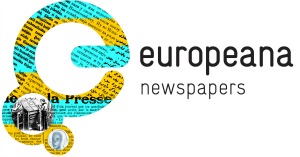Named Entity Recognition corpus for (historical) Dutch, French and German from Europeana Newspapers.
version 0.1 (originally released version)
The corpus comprises of one .tsv file per language following the GermEval2014 data format. The format is a simple tab-separated-values format that divides texts into single tokens per line with tab-separated annotations. The first column contains the token position in the sentence. The second column contains the token itself. The third column contains the named entity annotation. The fourth column can contain an embedded named entity annotation. Sentence boundaries are indicated with new lines, comments start with #.
The most commonly used categories for tags are PER (person), LOC (location) and ORG (organization) with a prefix of either B- (beginning of named entity) or I- (inside of named entity). O (outside of named entity) is used for tokens that are not a named entity.
Example:
# This is an example
1 The O O
2 NBA B-ORG O
3 player O O
4 Michael B-PER O
5 Jordan I-PER O
6 is O O
7 not O O
8 the O O
9 President B-PER O
10 of I-PER O
11 the I-PER O
# next we see the embedding structure
12 United I-PER B-LOC
13 States I-PER I-LOC
14 of I-PER I-LOC
15 America I-PER I-LOC
16 . O O
The data in this repository are based on digitized and OCRed historical newspapers sourced from these libraries:
enp_DE- newspapers from the Austrian National Library, Berlin State Library and Dr Friedrich Teßmann Libraryenp_FR- newspapers from the National Library of Franceenp_NL- newspapers from the National Library of the Netherlands
Europeana Newspapers NER corpora
https://github.com/EuropeanaNewspapers/ner-corpora/
Europeana Newspapers Project, 2012-2015
http://www.europeana-newspapers.eu/
- An Open Corpus for Named Entity Recognition in Historic Newspapers
Proceedings of the 10th edition of the Language Resources and Evaluation Conference (LREC 2016), 23-28 May 2016, Portorož, Slovenia.
The corpus contains many OCR errors, so further work is still needed to leverage it for demanding tasks like evaluation, where gold standard quality is required. Further information on data quality issues and instructions for data cleaning can be found in the wiki.
